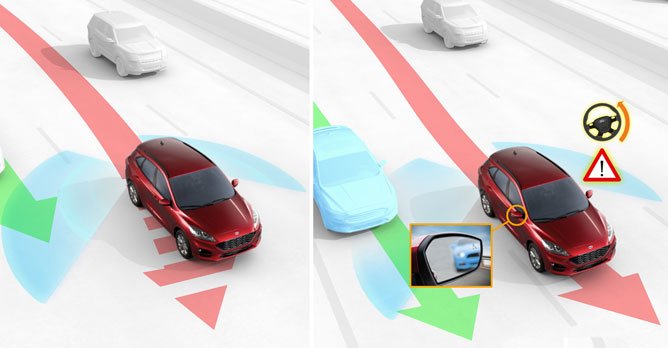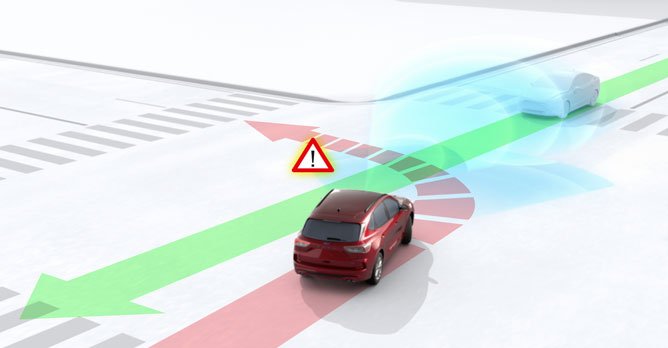Ford unveils new blind spot assist technology
08 Nov 2020|1,301 views
It's a scenario many drivers will be familiar with, checking mirrors and surroundings before beginning a lane change only to find another vehicle has appeared behind or alongside - seemingly out of nowhere.
Switching lanes is a routine manoeuvre for regular expressway users, but even the most attentive drivers can sometimes fail to spot potentially hazardous situations developing, particularly in their blind spots. Failing to look properly or to judge another road user's speed or direction was a factor in more than half of road accidents.

The new Lane-Keeping System with Blind Spot Assist goes a step further - able to apply a gentle force to the steering wheel to discourage drivers from changing lanes into the path of another road user and guide the vehicle away from danger, and it is debuting on the new Ford Kuga.
The Blind Spot Assist radar sensors scan parallel lanes for vehicles up to 28m behind, 20 times per second, while driving at speeds from 64km/h to 200km/h. An intervention can be automatically activated if the control system senses a lane-change by monitoring road markings using the forward-facing camera, and the technology calculates that the two vehicles are on a collision course.
The Lane-Keeping System with Blind Spot Assist can intervene to help prevent collisions with vehicles approaching with a closing speed of up to approximately 29km/h.

The technology can automatically apply the brakes when travelling at up to 29km/h to help prevent or mitigate the effects of accidents in scenarios where a driver is turning across the path of an oncoming vehicle, such as commonly encountered at crossroads or roundabouts.
And because the Intersection Assist system operates without the need to detect road furniture such as lane markings or kerbs, it can even intervene in carparks, worksites or other locations without clear markings or traffic priorities. Both systems can operate in daylight and in darkness with head lights activated.
It's a scenario many drivers will be familiar with, checking mirrors and surroundings before beginning a lane change only to find another vehicle has appeared behind or alongside - seemingly out of nowhere.
Switching lanes is a routine manoeuvre for regular expressway users, but even the most attentive drivers can sometimes fail to spot potentially hazardous situations developing, particularly in their blind spots. Failing to look properly or to judge another road user's speed or direction was a factor in more than half of road accidents.

The new Lane-Keeping System with Blind Spot Assist goes a step further - able to apply a gentle force to the steering wheel to discourage drivers from changing lanes into the path of another road user and guide the vehicle away from danger, and it is debuting on the new Ford Kuga.
The Blind Spot Assist radar sensors scan parallel lanes for vehicles up to 28m behind, 20 times per second, while driving at speeds from 64km/h to 200km/h. An intervention can be automatically activated if the control system senses a lane-change by monitoring road markings using the forward-facing camera, and the technology calculates that the two vehicles are on a collision course.
The Lane-Keeping System with Blind Spot Assist can intervene to help prevent collisions with vehicles approaching with a closing speed of up to approximately 29km/h.

The technology can automatically apply the brakes when travelling at up to 29km/h to help prevent or mitigate the effects of accidents in scenarios where a driver is turning across the path of an oncoming vehicle, such as commonly encountered at crossroads or roundabouts.
And because the Intersection Assist system operates without the need to detect road furniture such as lane markings or kerbs, it can even intervene in carparks, worksites or other locations without clear markings or traffic priorities. Both systems can operate in daylight and in darkness with head lights activated.
Latest COE Prices
November 2025 | 1st BIDDING
NEXT TENDER: 19 Nov 2025
CAT A$110,002
CAT B$115,001
CAT C$76,000
CAT E$121,010
View Full Results Thank You For Your Subscription.



















